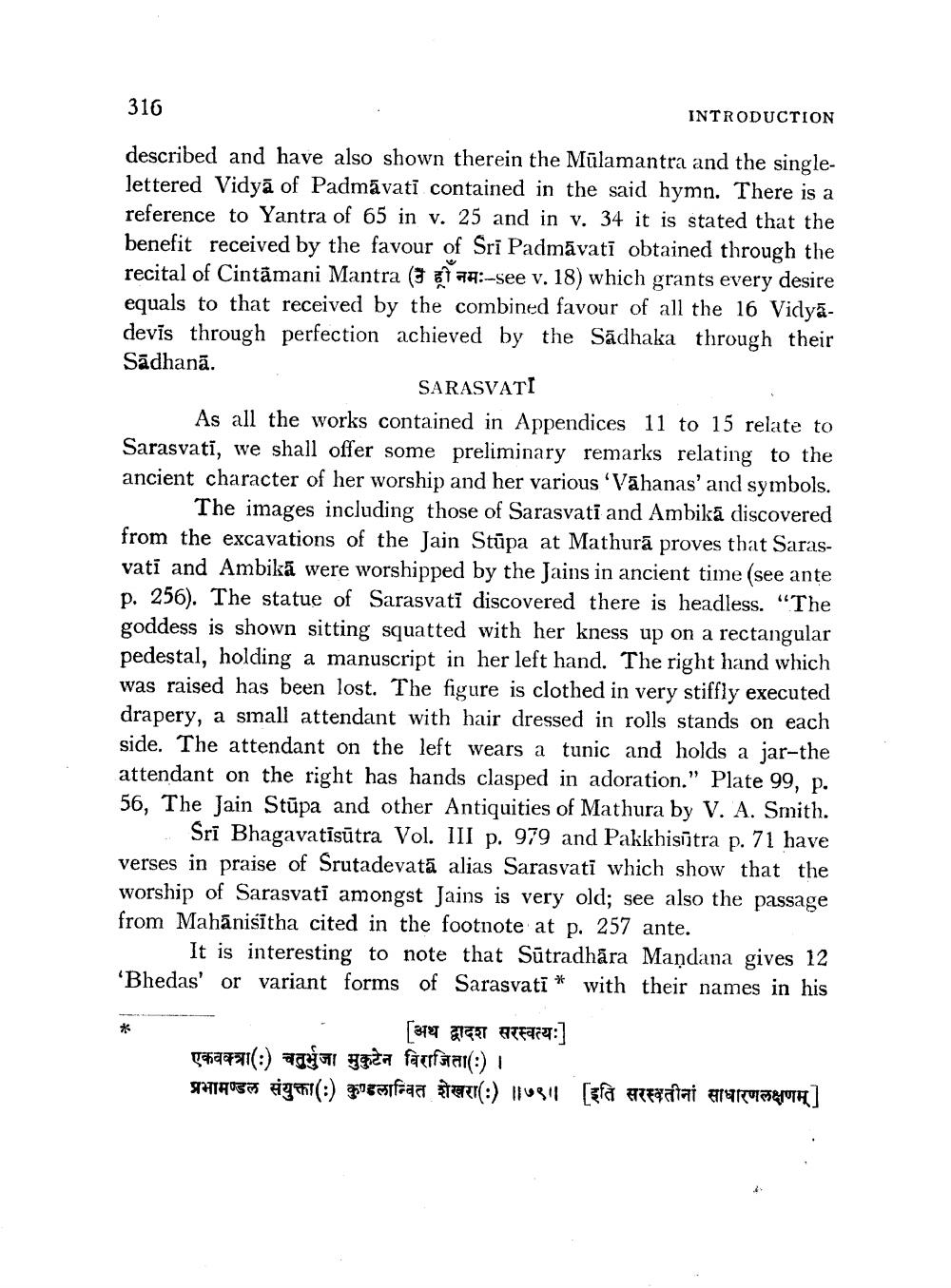________________
316
INTRODUCTION
described and have also shown therein the Mülamantra and the singlelettered Vidyā of Padmāvati contained in the said hymn. There is a reference to Yantra of 65 in v. 25 and in v. 34 it is stated that the benefit received by the favour of Sri Padmăvati obtained through the recital of Cintamani Mantra (8 a 24:-see v. 18) which grants every desire equals to that received by the combined favour of all the 16 Vidyādevīs through perfection achieved by the Sādhaka through their Sadhanā.
SARASVATI As all the works contained in Appendices 11 to 15 relate to Sarasvati, we shall offer some preliminary remarks relating to the ancient character of her worship and her various 'Vāhanas' and symbols.
The images including those of Sarasvati and Ambika discovered from the excavations of the Jain Stūpa at Mathurā proves that Sarasvati and Ambikā were worshipped by the Jains in ancient time (see ante p. 256). The statue of Sarasvati discovered there is headless. “The goddess is shown sitting squatted with her kness up on a rectangular pedestal, holding a manuscript in her left hand. The right hand which was raised has been lost. The figure is clothed in very stiffly executed drapery, a small attendant with hair dressed in rolls stands on each side. The attendant on the left wears a tunic and holds a jar-the attendant on the right has hands clasped in adoration." Plate 99, p. 56, The Jain Stūpa and other Antiquities of Mathura by V. A. Smith.
Sri Bhagavatīsūtra Vol. III p. 979 and Pakkhisūtra p. 71 have verses in praise of Srutadevatā alias Sarasvati which show that the worship of Sarasvati amongst Jains is very old; see also the passage from Mahānisītha cited in the footnote at p. 257 ante.
It is interesting to note that Sūtradhāra Mandana gives 12 'Bhedas' or variant forms of Sarasvati * with their names in his
[अथ द्वादश सरस्वत्यः guar(:) ayar gaida farftar(:) प्रभामण्डल संयुक्ता(:) कुण्डलान्वित शेखरा(:) ॥७९॥ [इति सरस्वतीनां साधारणलक्षणम्]




